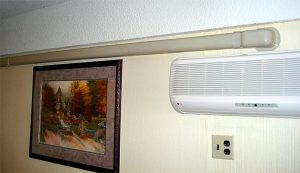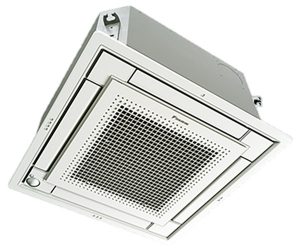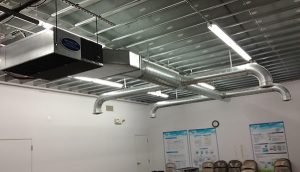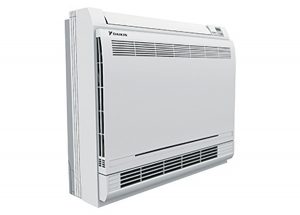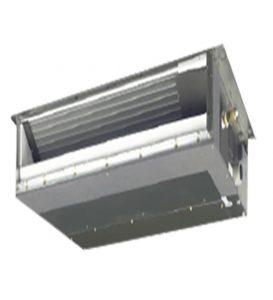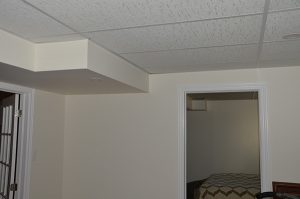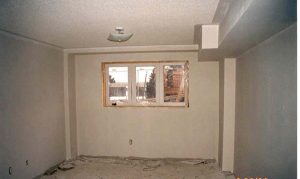
Ductless heat pumps: A better split decision?
May 15, 2018 | By Ian McTeer
After learning about the latest computer technology during a school visit to the Ontario Science Centre in the 1980s my youngest son asked me if we were getting a fax machine. Hardly computer literate myself in those days, I told him “No, I cannot think of a reason why we’d ever need one.” Little did I know that by 1997 when I started working as a field service representative, the fax machine would become one of my go-to tools for communicating with my customers.
Once the plain paper fax connected to my computer came into our office, I set about faxing service bulletins, meeting notifications, new product information and submittals all over Ontario and other parts of Canada. And, yes, we had a home fax machine for many years.
Admittedly, I thought about ductless mini splits in the same way as the fax machine at first exposure: how much use could they possibly be? I could understand going ductless for cooling in Europe and Asia where basements and ductwork are relatively unknown, but not in Canada where ductwork rules.
MY HEART WAS BROKEN
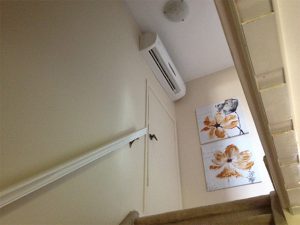
Cooling head at the top of the stairwell will spill too much needed cool air downstairs reducing second floor comfort. First floor unit’s temperature sensor may be affected and “decide” not to engage first floor cooling when needed. Location is the key to comfort and efficiency.
I have mentioned in previous columns how so many houses built in the late 1960s, maybe even to this day, have what could best be described as second rate forced air HVAC systems. Poorly designed, too often improperly installed, and rarely ever properly commissioned, many single-zone ducted systems delivered inconsistent heating and cooling throughout their structures.
My beloved forced air systems were failing homeowners and my equipment. Often, once-upon-a-time acceptable duct systems, originally designed for the 65 per cent AFUE furnaces of yesteryear, caused modern-day condensing gas furnaces to stumble and choke. The 95 per cent AFUE thoroughbreds, very common in the field today, too often fail to deliver advertised comfort and efficiency. Higher than expected utility bills combined with excessive service calls is now the norm for too many consumers.
Some contractors fail to recognize the severe limitations of existing ductwork while the door-to-door box-changers simply do not care. Taking the time to interview a prospective customer, learning which rooms are comfortable or not is helpful in determining what repairs to the existing system might be necessary.
A simple rule of thumb still applies: If you cannot heat a room, you will never cool it.
By 2001, I saw my first ductless system in operation. Installed in a master bedroom, the 9,000 Btu/h unit supplemented the existing cooling system that could not keep up with the load on the hottest days. The customer’s large house had a single zone, single stage heating and cooling system that failed to keep the second floor cool; however, the system did a decent job on the first floor but turned the basement into a meat locker.
Later on, I saw a ductless unit installed in an addition to a restaurant dining room (Figure 1); my barber got a ductless unit; the family dentist went ductless; and eventually at my company’s office, our second floor meeting room got a ductless unit to deal with all the hot air produced in there (Figure 2).
RESIDENTIAL MINI-SPLIT HEAT PUMP APPLICATION OPPORTUNITIES
In today’s HVAC world, the word “efficiency” rings a familiar, highly desirable bell with most consumers, maybe even more-so than “low price” in some cases. Selling an AHRI rated 20 SEER cooling system along with a 95 per cent AFUE two-stage ECM equipped gas furnace into a retrofit application rings the efficiency bell several times compared to the original system, or does it?
Think about buying the most efficient car in the world only to find that all the paved roads have turned into rutted cow paths due to shoddy engineering and lack of maintenance. Navigating around potholes and spinning your wheels through mud puddles will knock your car’s efficiency numbers back into the Stone Age. In the same vein, trying to force air through the ductwork equivalent to that of an oversized soda straw runs riot over any efficiency claims.
Consider this: an ECM blower, relegated to serve in a second rate system, will only use more watts than advertised simply by trying to deliver its programmed volume of air at a higher (and annoying) velocity. Not to mention short cycling due to oversizing, limit tripping, pressure switch hiccups, and so on.
The residential sales professional must ask some important comfort questions:
- Are you unhappy with the level of comfort in your home provided by the current HVAC system?
- Are there any cold spots, hot spots depending on the season?
- Is the system noisy?
- Are you less likely to use the cooling unit due to high costs?
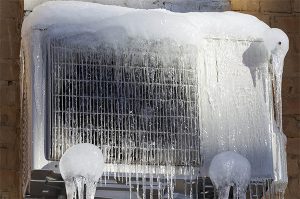
All air-source outdoor units must be protected from dripping water and strong winds. Some manufacturers provide effective wind guards, but units should not be installed under roof overhangs where roof meltwater is a concern.
Should the customer answer be “Yes” to all, then how will an ECM equipped furnace solve all these customer concerns? Remembering that an ECM ramps up to maintain programmed airflow in a restricted duct system, offering a conventional ECM equipped furnace provides no solutions to any of these questions. Soda straw air handling systems will require some expensive renovations before the advertised efficiency of even the best AHRI rated gas furnace and cooling unit can be delivered to the consumer; and it is likely still a single zone system.
Or, consider abandoning the existing air handling system in favour of one or more multi-zone ductless heat pumps. As I mentioned in a previous article, technological improvements such as vapour injected scroll and brushless DC (BLDC) twin rotary compressors combined with electronic expansion valves and superior electronics make ductless heat pumps a valid choice for cold climates.
In houses with electric baseboards or hydronic heating, ductless heat pumps are the lowest cost and most efficient way to keep the existing system off-line until absolutely necessary. Some heat pumps can even signal the baseboards to operate below balance point.
Admittedly, it could be a challenge to find an appropriate location for the indoor evaporator fan coil or “head” in a retrofit application. Line length constraints, challenges in running electrical wiring and providing an easy path for a condensate drain line could eliminate many desirable locations, especially on interior walls. But the high wall heads no longer take precedence when selecting indoor sections.
As shown in Figure 3, a four-way cassette connected through the attic could solve a second floor issue. Many systems can work with wall mounted fan coils designed to fit underneath windows (see Figure 4). And a ducted fan coil could be used in an attic, crawlspace, alcove or basement as shown in Figure 5.
While abandoning the existing system sounds extreme in a residential retrofit application, there is no point whatsoever slapping a top-of-the-line Energy Star furnace and cooling unit into a half-baked duct system.
Instead, promote the least efficient gas furnace and then suggest the installation of an Energy Star ductless heat pump leaving the furnace to run as back-up when necessary.
The multi-zone system promises efficient HVAC providing individual zone temperature control and quiet operation. Some mini-split units are meant to work with existing ductwork; however, beware the soda straw system. Just like any other air handler, installers must be certain the air distribution system is adequate to meet manufacturer’s specifications. Without verified data, you cannot trust an existing system.
RENOVATION AND NEW CONSTRUCTION
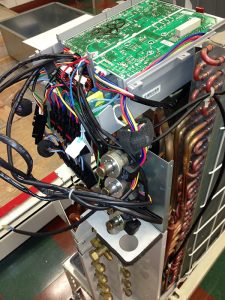
Five zone outdoor unit showing control board, outdoor coil, refrigerant controls and connection fittings.
Newly constructed houses and renovation jobs meeting Canada’s latest building code iteration make cold climate multi-zone mini split systems a truly viable HVAC option.
Utilizing low or high static recessed air handling units, the entire house can be zoned several times over providing comfort in every area.
Ducted air handlers (yes, we still need ducts) installed either vertically or horizontally in a closet or alcove or architecturally designed bulkhead close to the distribution point will become the norm in new construction, seems to me. Utilizing small, very short, low-static duct runs extending into one or two rooms should eliminate the need for bulky ducts covered-up by extensive builder-fabricated bulkheads.
Outstanding improvements in mini-split technology make this equipment hard to beat as a comfortable, energy efficient and cost competitive residential heating and cooling solution. Consider the evidence:
Variable flow refrigerant technology with inverter driven compressors sip energy while providing just the right amount of cooling or heating at any given time.
Cold climate heat pumps with vapour injection provide adequate heat to well below zero Celsius.
Some units can signal electric baseboard heater operation as needed for below balance point or emergency heat situations. Effective on-board diagnostics help technicians find and correct problems more easily.
Slim profile low and high static air handlers can be built-into small bulkheads eliminating attic installations for second floor applications. Some recessed air handlers have electric heat options.
Several manufacturers have developed recessed air handlers featuring automatic or adjustable static pressure balancing (does not undo the need for good duct design, though).
Other options like built-in condensate pumps and cassette units having a knock-out allowing a connection to outdoor air are available from several manufacturers.
While operating, indoor and outdoor units are typically very quiet even during defrost periods.
Wireless controls – no more fishing thermostat wires! Although, I think I would use the wired option wherever possible.
INSTALLATION, COMMISSIONING AND MAINTENANCE
No doubt, mini split equipment can be mixed and matched so that, for example, a five zone system might consist of two-heads, one low static recessed unit, and two ceiling cassettes. While flexibility is desirable, it does have its limitations.
Manufacturers have rules (written in stone) for unit placement, pipe sizing, piping run and rise, communication wiring, evacuation and dehydration, and condensate disposal. Such tenets must not be overlooked; in other words, they are not flexible beyond the maximums. Indoor heads should be installed where they are serviceable, while recessed units must have a customer-friendly, serviceable air inlet filter.
Remember the maintenance rule of thumb: a unit that is difficult to service won’t be serviced. End users must be educated to clean air filters regularly; a yearly preventive maintenance plan should be offered too.
HVAC technology, from the days of burning half-trees in the castle fireplace while relaxing in a Queen Anne wingback chair; to coal fired gravity central heating; to oil and gas-fired forced warm air systems, has finally arrived at the nexus of comfort, reliability and efficiency.
Builders liked to “hide” the HVAC system from potential homebuyers by tucking furnaces under the basement stairs or obscurely at one end of the basement thus sidelining the simplicity of a central heating system. Such efforts produced convoluted duct systems, approved by plan examiners in principle, but ultimately did not deliver on desirable HVAC values like comfort and efficiency in practice.
While fax machines and single zone forced air systems may have had their day in my world, I am thinking heat pump mini split systems are definitely taking over centre stage. <>
Ian McTeer is an HVAC consultant with 35 years experience in the industry. He was most recently a field rep for Trane Canada DSO. McTeer is a refrigeration mechanic and Class 1 Gas technician.

